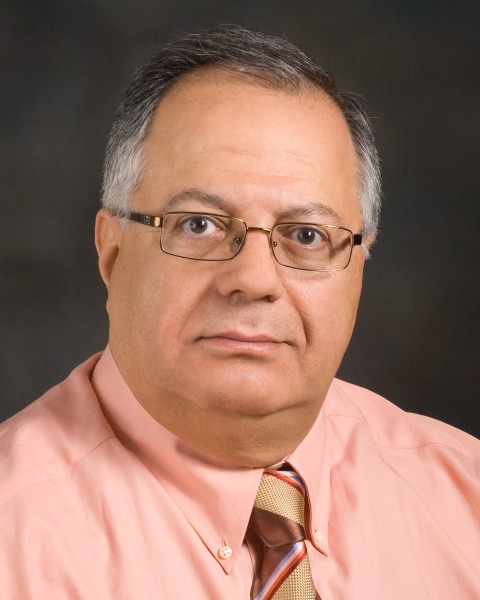Back
Therapeutics- Systemic (Ablation, Interventional Radiology, Medical Oncology, Radiation Therapy, Surgery, Urology)
32: Efficacy and safety of nivolumab plus ipilimumab versus sunitinib for first-line treatment of patients with advanced sarcomatoid renal cell carcinoma (sRCC) in the phase 3 CheckMate 214 trial with extended 5-year minimum follow-up
Location: Poster Hall, Board C8

Nizar M. Tannir, MD
Professor
University of Texas MD Anderson Cancer Center
Houston, TX, United States
Poster Presenter(s)
Background: First-line nivolumab plus ipilimumab (NIVO+IPI) provided efficacy benefits over sunitinib (SUN) in patients with intermediate/poor (I/P)-risk sRCC at 42 months follow-up. We report an exploratory post hoc analysis of NIVO+IPI versus SUN in patients with I/P-risk and sRCC with long-term follow-up of 5 years.
Methods: Patients with clear cell advanced RCC were randomized 1:1 to NIVO 3 mg/kg plus IPI 1 mg/kg Q3W×4, then NIVO 3 mg/kg Q2W versus SUN 50 mg QD (4 weeks; 6-week cycles). Patients with sRCC were identified via independent central pathology review of archival tumor tissue or histological classification per local pathology. Endpoints included overall survival (OS), progression-free survival (PFS) per independent radiology review, and objective response rate (ORR) per RECIST v1.1 in all I/P-risk patients with sRCC and by baseline PD-L1 expression. Safety outcomes used descriptive statistics.
Results: Of 1096 randomized patients in CheckMate 214, 139 I/P-risk patients with sRCC were identified. More patients remained on treatment at 5 years with NIVO+IPI versus SUN (12% vs 0). The primary reason for discontinuation was disease progression (NIVO+IPI, 37%; SUN, 71%). Efficacy benefits continued to favor NIVO+IPI versus SUN, including OS, PFS, and ORR (Table). Median duration of response was longer (NR vs 25 months) and more patients had complete responses (23% vs 6%) with NIVO+IPI versus SUN, respectively. Efficacy was better with NIVO+IPI versus SUN regardless of PD-L1 expression (Table). No new safety signals emerged.
Conclusions: The long-term survival benefits and durable and deep responses with NIVO+IPI versus SUN in I/P-risk patients with sRCC support NIVO+IPI as a preferred first-line therapy in this population.
Previously presented at the ASCO 2022 Annual Meeting. All rights reserved.
Methods: Patients with clear cell advanced RCC were randomized 1:1 to NIVO 3 mg/kg plus IPI 1 mg/kg Q3W×4, then NIVO 3 mg/kg Q2W versus SUN 50 mg QD (4 weeks; 6-week cycles). Patients with sRCC were identified via independent central pathology review of archival tumor tissue or histological classification per local pathology. Endpoints included overall survival (OS), progression-free survival (PFS) per independent radiology review, and objective response rate (ORR) per RECIST v1.1 in all I/P-risk patients with sRCC and by baseline PD-L1 expression. Safety outcomes used descriptive statistics.
Results: Of 1096 randomized patients in CheckMate 214, 139 I/P-risk patients with sRCC were identified. More patients remained on treatment at 5 years with NIVO+IPI versus SUN (12% vs 0). The primary reason for discontinuation was disease progression (NIVO+IPI, 37%; SUN, 71%). Efficacy benefits continued to favor NIVO+IPI versus SUN, including OS, PFS, and ORR (Table). Median duration of response was longer (NR vs 25 months) and more patients had complete responses (23% vs 6%) with NIVO+IPI versus SUN, respectively. Efficacy was better with NIVO+IPI versus SUN regardless of PD-L1 expression (Table). No new safety signals emerged.
Conclusions: The long-term survival benefits and durable and deep responses with NIVO+IPI versus SUN in I/P-risk patients with sRCC support NIVO+IPI as a preferred first-line therapy in this population.
Previously presented at the ASCO 2022 Annual Meeting. All rights reserved.
